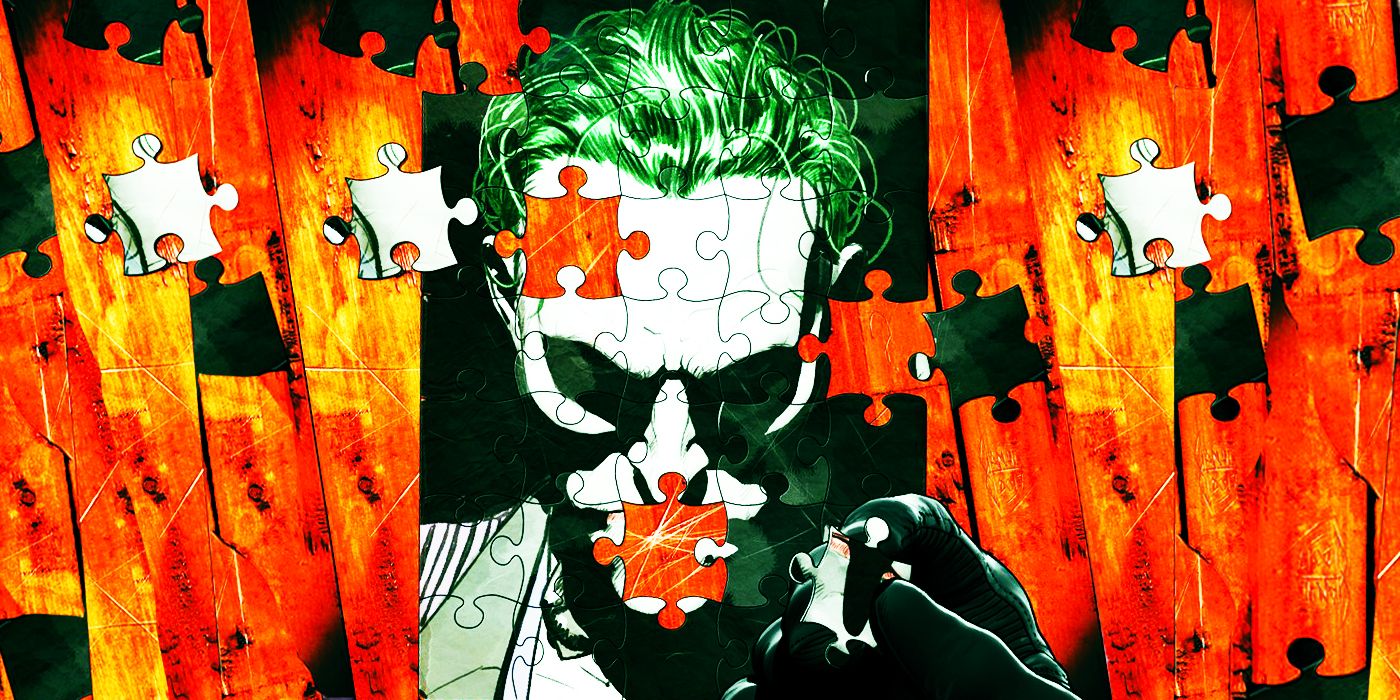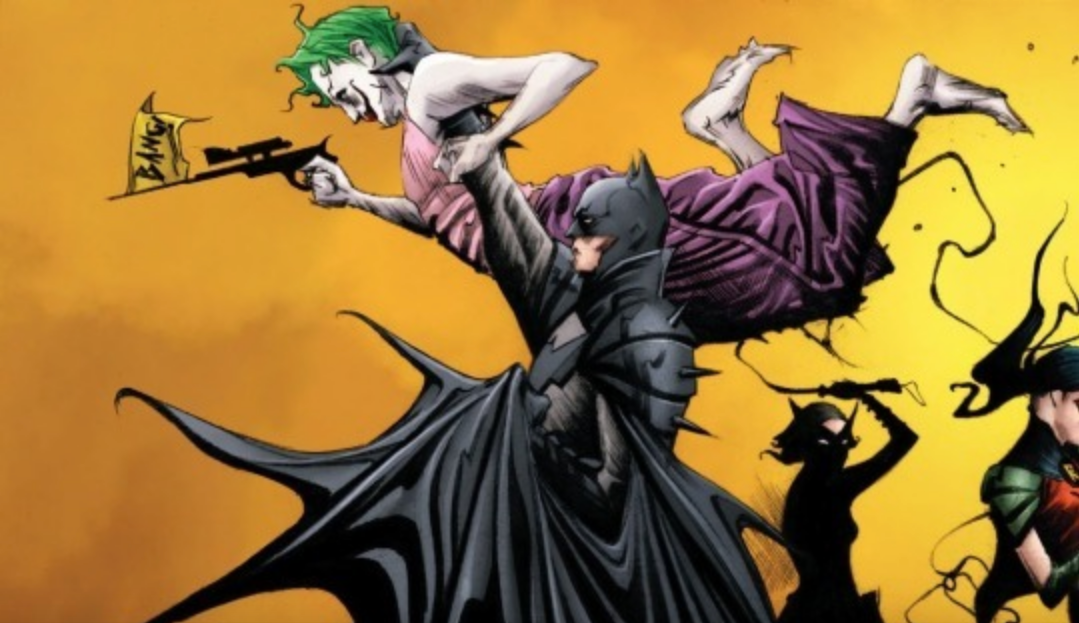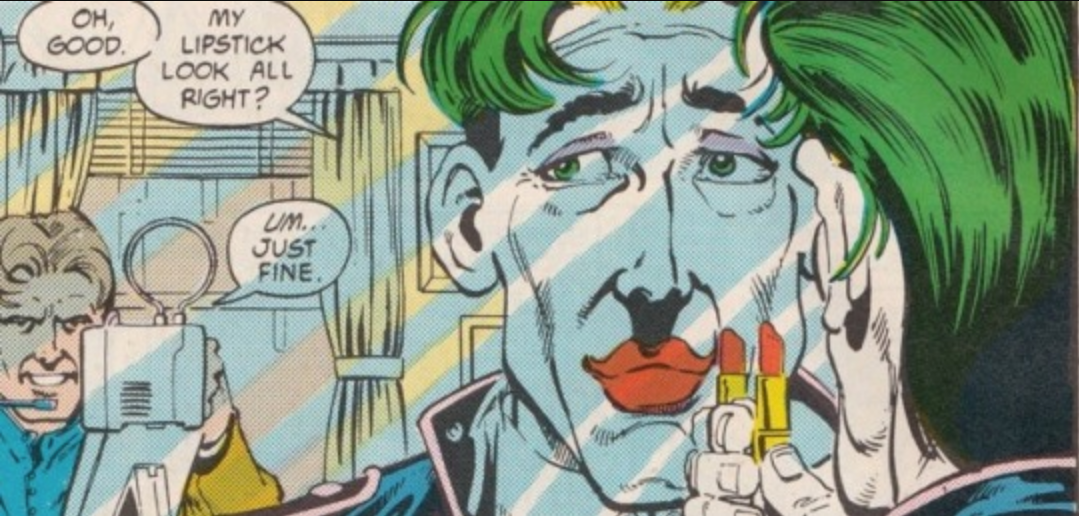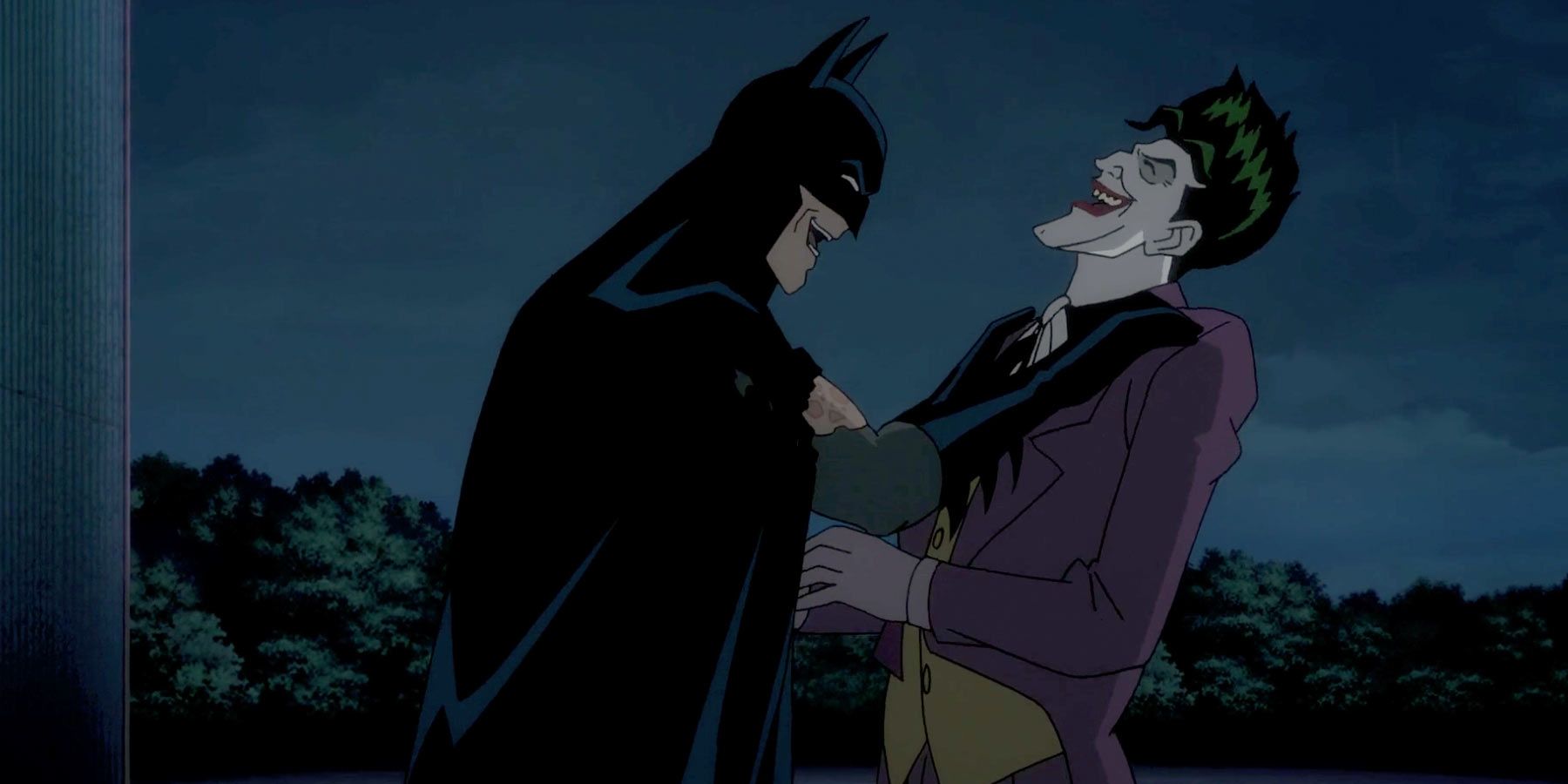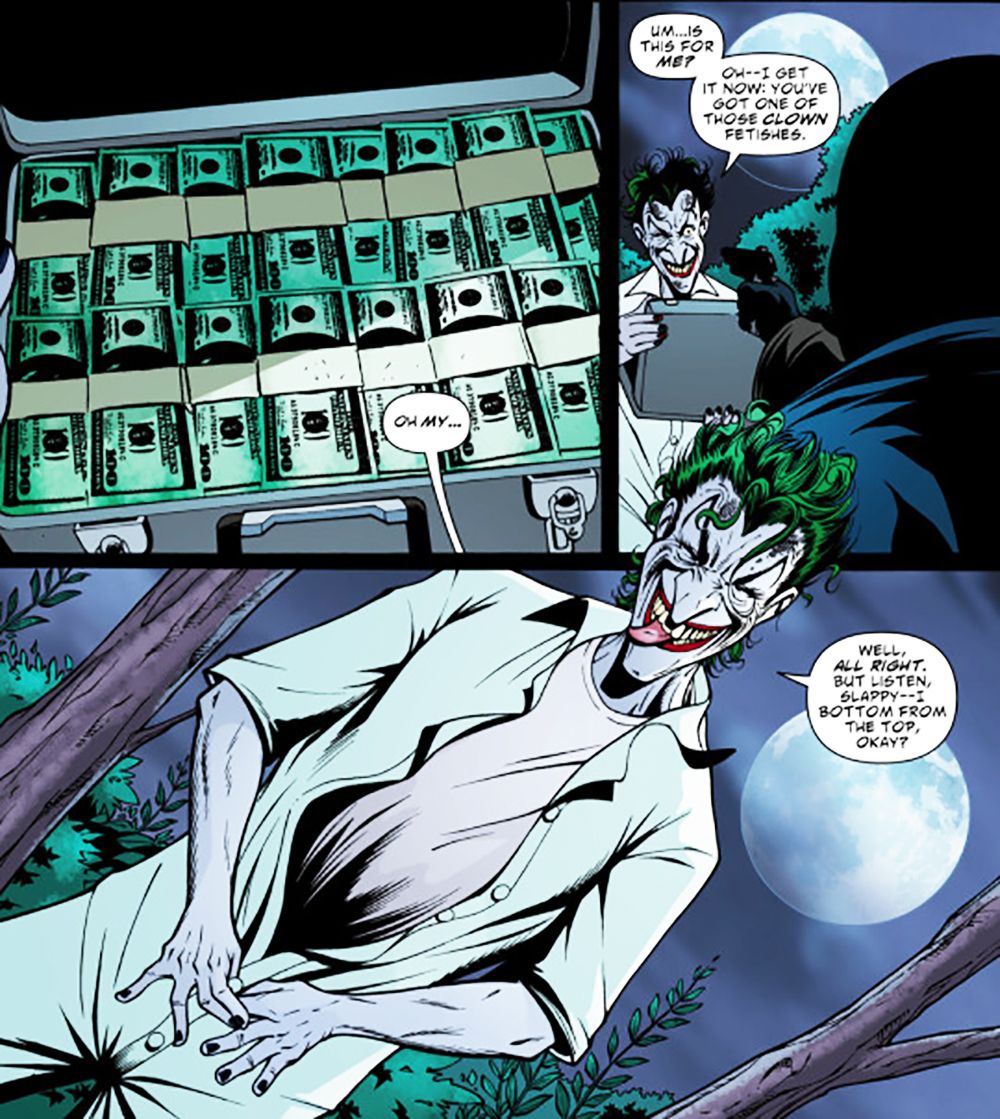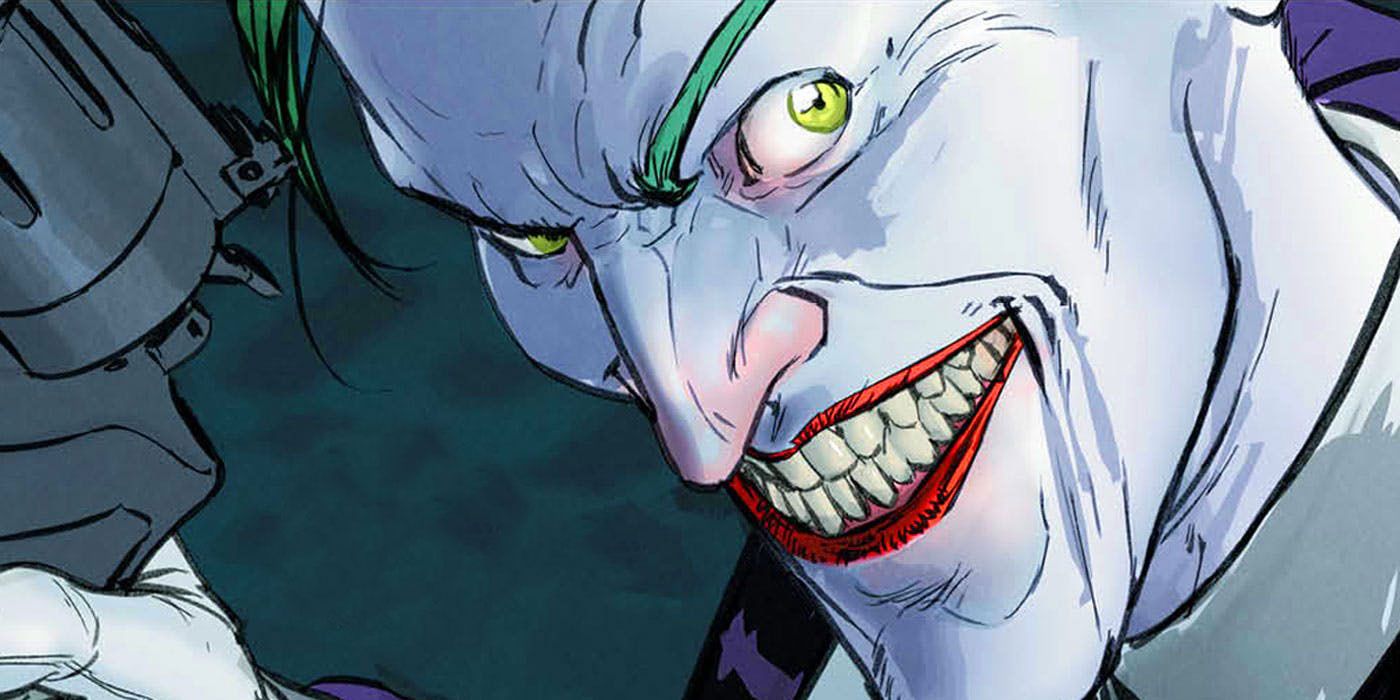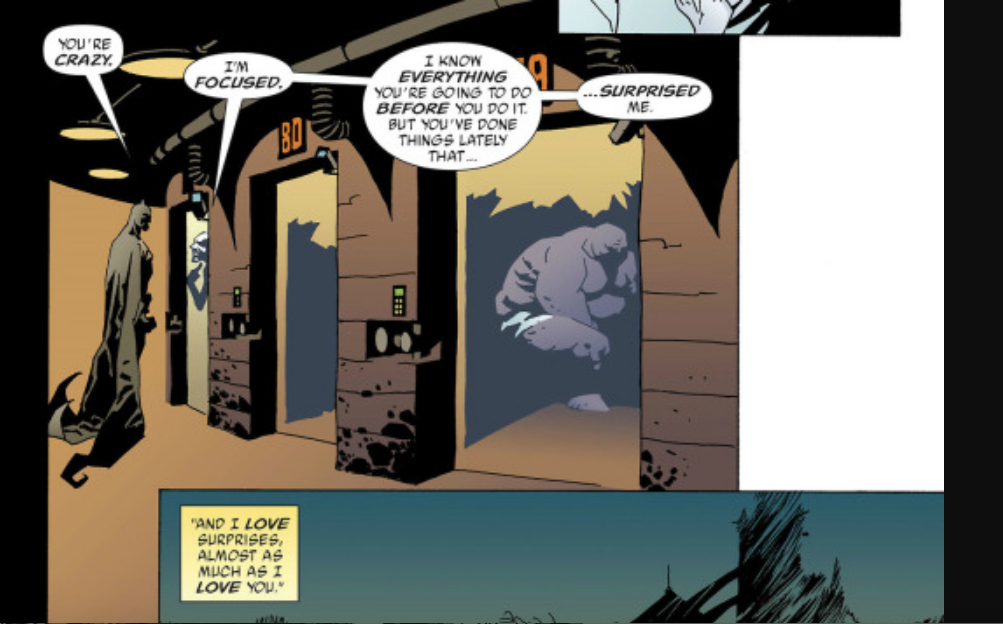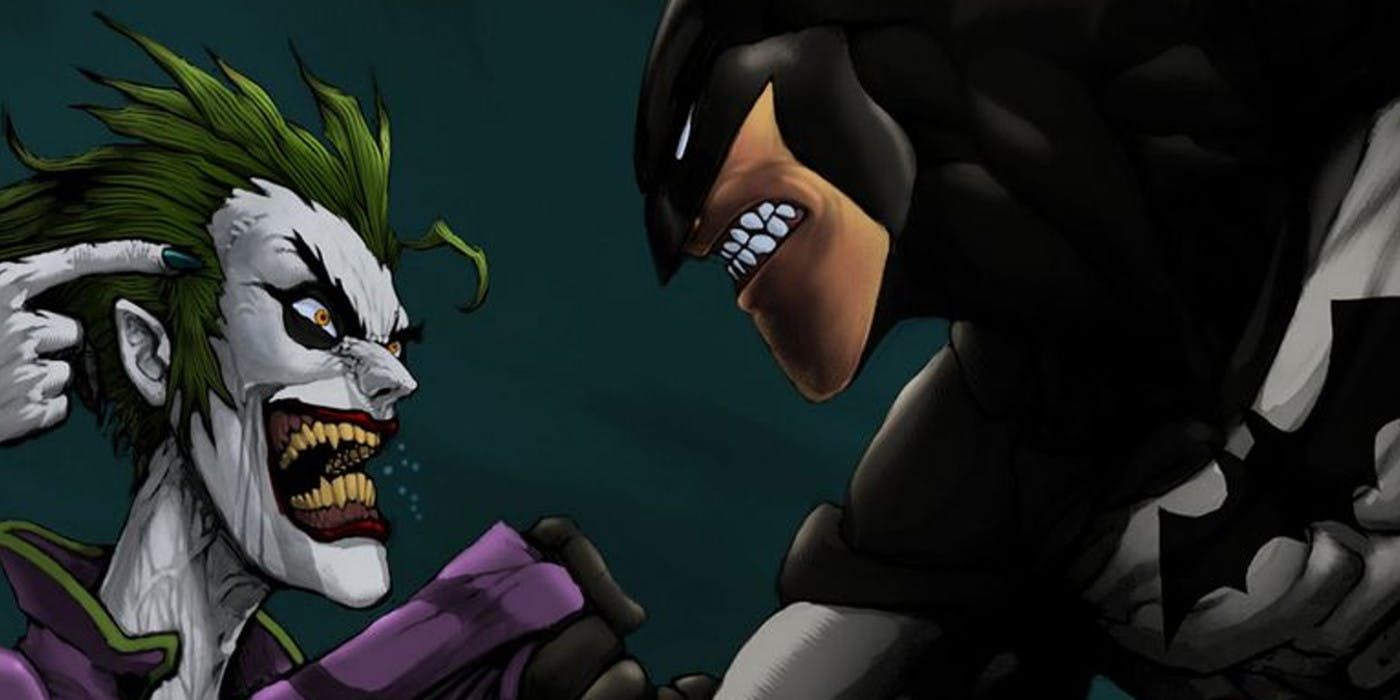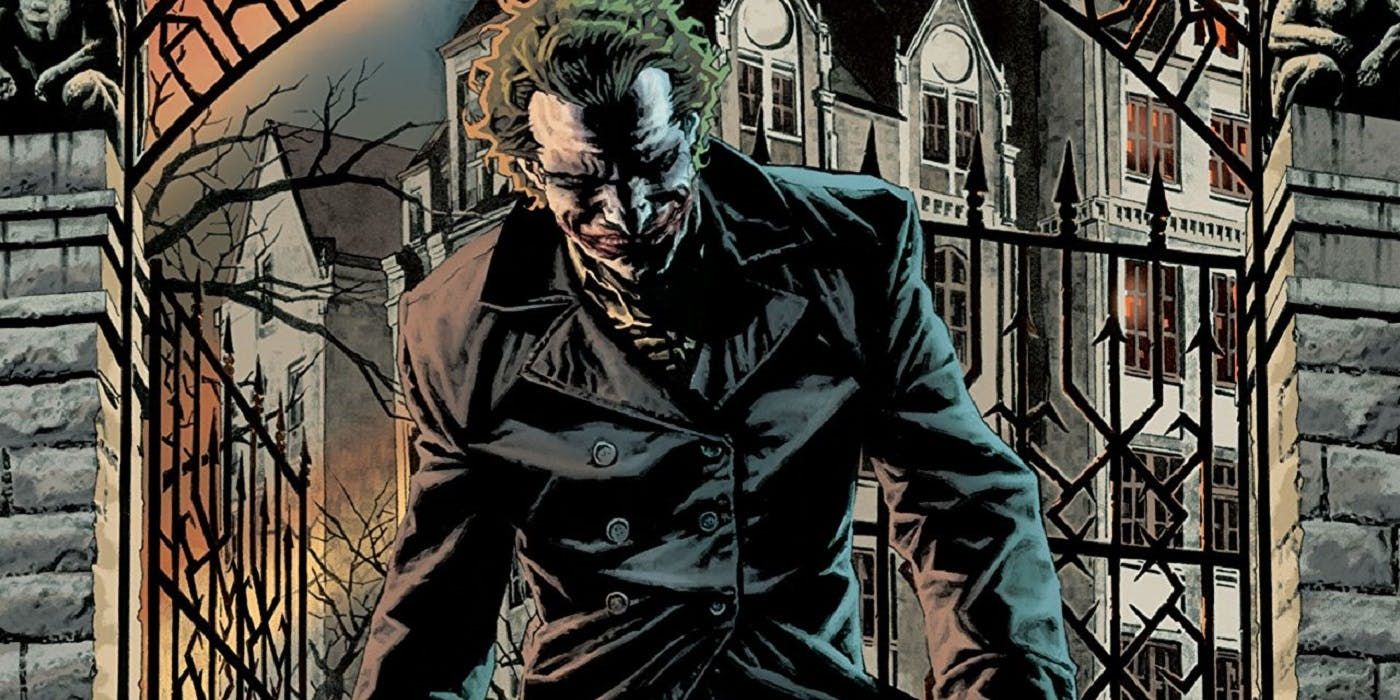A petition on Change.org started by Elena Shestakova calls for DC Entertainment to "Make The Joker Gay Again," compacting the long-running speculation about the DC villain's sexuality into a clear call to action.
"The Joker is a character with almost 80 years [of] history, half of which he was portrayed as homosexual," Shestakova states. "Neal Adams claimed that the Joker was and always had been homosexual [..] in the 'Batman Files' book. This opinion was shared by other comic book authors and artists for decades. That is why it's so important to me and other queer readers to return his homosexuality."
RELATED: Batman: The Animated Series - Why You Never Sully the Joker's Image
By "return," Shestakova means that since Harley Quinn was introduced in Batman: The Animated Series in the early '90s, her infamous infatuation with her puddin' means Joker has been viewed in a more heterosexual mold.
This mainstream interpretation hasn't faltered, despite the couple's messy break-up. Interestingly, since then, Harley has been able to openly explore her bisexuality, recently revealing a secret marriage to Poison Ivy in an alternate dimension. "DC's queer villains are almost all bisexual women," the petition notes.
The Queer Prince Of Crime: A History
Ultimately, Shestakova isn't calling on DC to graft something new onto a beloved character, as some fans have interpreted, but to "restore" something that was already there. Reversing the erasure of the Joker's queer identity also makes for more varied LGBTQ representation in the DC Universe, which Shestakova reminds us is important "because sometimes fictional characters [are] something real people hold onto."
RELATED: Justice League Art Reveals Never Before Seen Scenes From Joker's Childhood
For those unfamiliar with the Joker's lengthy history of being both explicitly queer or queer-coded, or even for those who are aware of it, Shestakova's collection of evidence to support her case is well worth a look.
From as early as the character's first solo comic series in 1975-6, the Joker's relish of applying red lipstick has been characterized as an act of show girl-style beautification, not just fear inducement.
Grant Morrison's unused sketches for Arkham Asylum: A Serious House on Serious Earth went one step further, putting him in full Rocky Horror Show drag, while Christopher Nolan used a female nurse's outfit in The Dark Knight.
RELATED: Old Lady Harley is All 'About the Harley/Joker Relationship'
While his feminine traits are stereotypes, it certainly adds another dimension to his nightly encounters with Batman. Is he trying to spook the Caped Crusader or getting dolled up for a date with him? Or both?
Joker Vs. Batman: Never-Ending Battle Or Unrequited Love?
Joker's teasing of Batman goes beyond your typical supervillain/superhero relationship of obsessive rivalry. The Joker is always flirtatious with his arch nemesis. He makes sexual innuendos, coyly asks for kisses and revels in any attention the Dark Knight pays him. This part of their relationship has been highlighted in some of their biggest stories together, in comics or on-screen.
RELATED: The Joker: 10 Looks That Slay Us (And 5 That Just Look Funny)
In Scott Snyder and Greg Capullo's "Death Of The Family," which Snyder called a "love letter to Batman from Joker," Joker describes their battles as "dances," calls Batman "darling" and refers to himself as "yours" during their interactions, echoing his flamboyant, love-lorn portrayal in "Batman: A Death In The Family," which Snyder's story pays homage to, if only in name.
Snyder also has Joker tell Nightwing that he "always smell[s] so good," proving that -- as Shestakova points out -- the Clown Prince of Crime doesn't just have eyes for Bats. In Chuck Dixon and Graham Nolan's "Devil's Advocate," he mentions an ex-boyfriend who "broke his heart," while in Kevin Smith, Walt Flanagan and Sandra Hope's "Batman: Cacophony," he explicitly propositions a surprised male associate.
Next Page: Is Joker The Straight Man Of His Own Joke?
The Straight Man?
The Joker has also had relationships with women. He had a wife in Alan Moore and Brian Bolland's The Killing Joke, and has shown an intimate interest in Harley -- though more as an object than a woman.
RELATED: He Who Laughs, Lasts: Why The Joker Endures
Taking the character's entire history into account, different readings could either see a troubled portrait of a closeted gay man feigning an interest in heterosexuality, or someone who is openly bisexual, pansexual or sexually fluid.
Given his fixation on the world's greatest detective, he could even be sapiosexual. But regardless of how we define the Joker -- or even whether doing so is an exercise in futility -- there are some problems surrounding the attempt.
What A Riot: The Problems Of A Queer Joker
A potential problem with labelling the Joker as queer is the optic it creates. A fully outed homicidal maniac in the guise of something intended to entertain children could further the bigoted conflation of LGBTQ people with abnormality and monstrosity. His compulsion to Joker-fy his victims also feeds the homophobic myth of a gay conversion agenda.
Frank Miller once summarized the Joker and Batman has a "homophobic nightmare." But "being queer doesn't make someone a bad person," Shestakova points out, "therefore, fictional characters don't need to be good and righteous to be gay. Not all people can relate to heroes, many of them love villains."
There's also a case to be made for ambiguity. In a genre bogged down in the nitty gritty of retcons and repetition, the Joker's infinite flexibility is what's kept a non-super-powered man in clown make-up the top dog of DC's villain's pound for decades.
The Joker has no fixed origin, no fixed identity and no fixed rulebook to play by. Should his sexuality be any different?
RELATED: Bruce Timm Weighs In On Implications Of "Killing Jokes" Sexualized Joker
From his exaggerated red lips to his swooning dramatics around Batman, the Joker performs a particular sexual identity just like he performs everything else -- one that he knows will unnerve the billionaire playboy. He makes no secret that his ultimate desire is driven by a violent domination fantasy.
Thus, by antagonizing Batman into breaking his One Rule, the Joker longs to dominate the Dark Knight by allowing Bruce to dominate him -- by taking his life. ("La petit mort," but... literally.)
The depth of his relationship with Batman is ostensibly missing from the one he's shared with Harley Quinn, perhaps laid most acutely bare in Suicide Squad. The theatrically-released cut of the 2016 movie gave us a muted, grunting, Harley-oriented Joker. Wherever she was, he would follow.
Had Harley been gender-flipped, the dynamic in this case would have been the same, but because of the over-representation of heterosexuality in the media, it felt even more stale. Even worse, it made the Joker into the one thing he should never be: predictable.
RELATED: Harley Quinn Finally Gets Back at Joker for His Years of Abuse
That being said, works like Brian Azarello and Lee Bermejo's The Joker does a far better job at this type of Joker/Harley story; using his attachment to her to humanize rather than romanticize him, the latter of which is always problematic, given his history of domestic violence.
This isn't to say that ambiguity means a character can't be explicitly ambiguous, though. Shestakova's campaign rests on the issue of equal representation as well as combatting erasure, after all. The idea of a straight Joker was able to be established in just a couple of episodes of a cartoon that aired two decades ago.
There's no reason that the historical subtext of a gay, bisexual, pansexual, queer or asexual Joker can't be brought back to the surface in a similar, unmistakable way.

